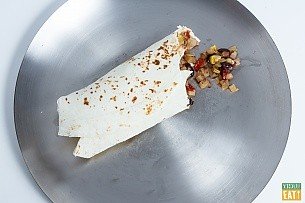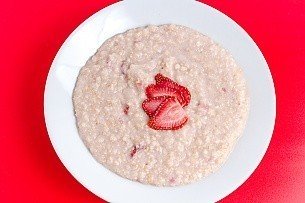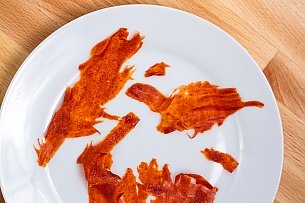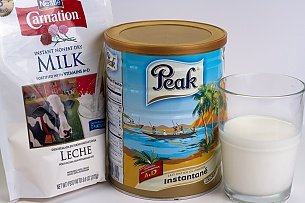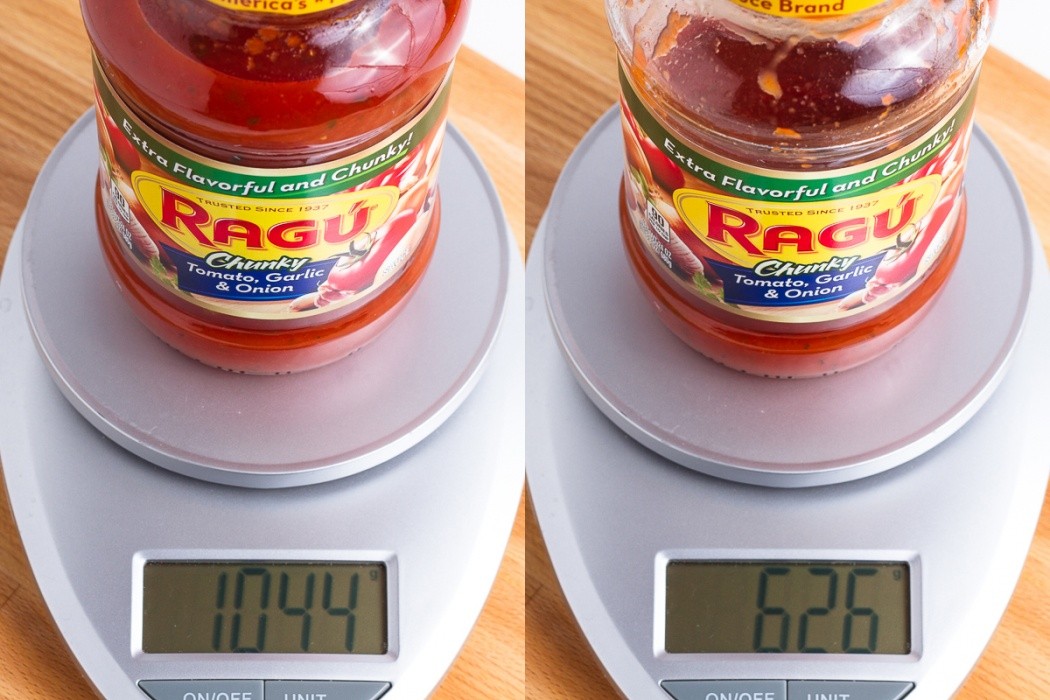
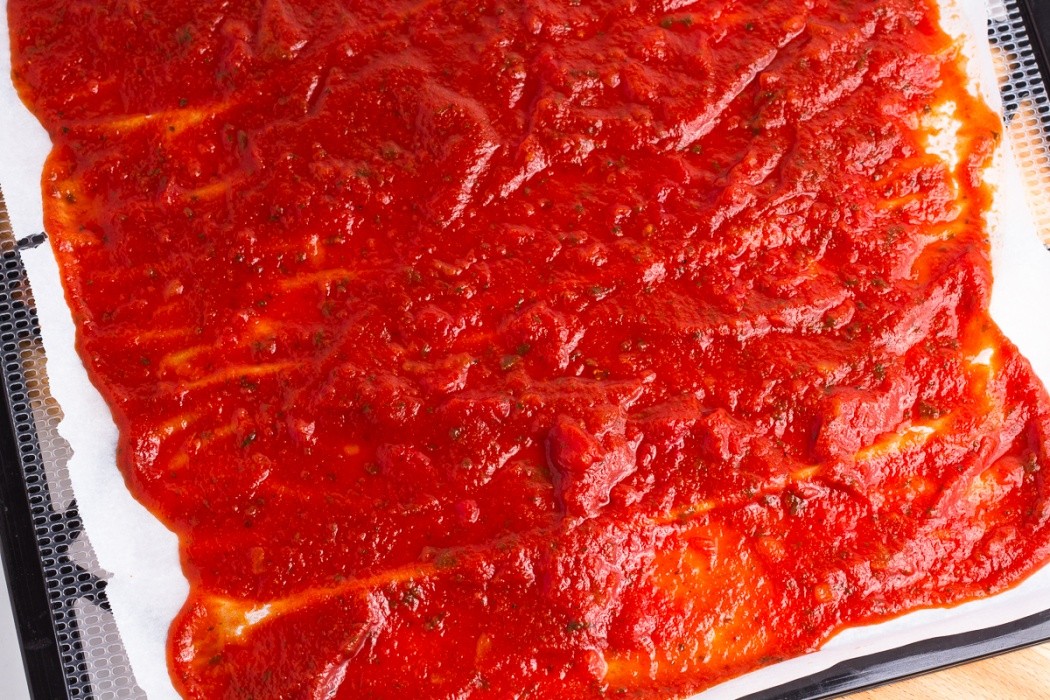
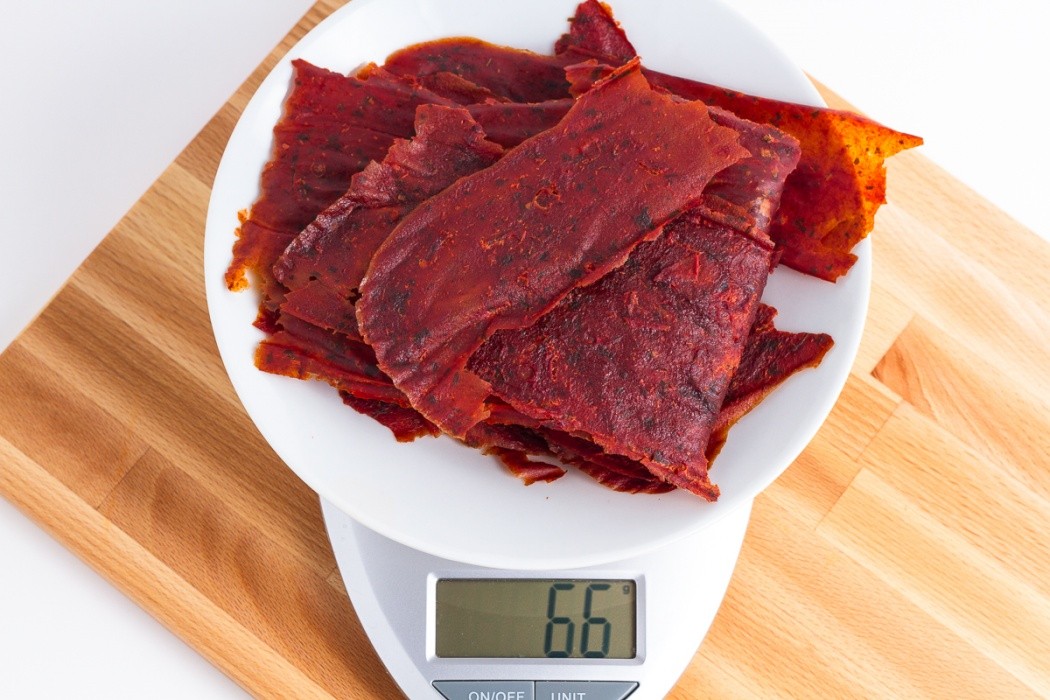
Temperature
135°F
Dry Time
6-8 hours
Wet Weight
418 grams
Dry Weight
66 grams
Notes / Directions
- Canned pasta sauce is convenient, but homemade pasta sauce is even better for longer shelf life.
- When making your own sauce, do not add any oil or meats that contain fat.
- Avoid adding sugar to your sauce as too much will cause the sauce to be more leathery instead of brittle.
- If spread thin and dried long enough the sauce can be turned into powder in a blender.
- Do not put leathery sauce into a blender or food processor, it will gum up your blades and turn into a sticky mass, cut it into strips instead.
- Pasta sauce should be dehydrated at the same time and temperature as a fruit leather.
- Flip halfway through drying and smear any wet spots onto already dry spots.
- Parchment paper is actually better than ParaFlexx or solid silicon sheets because it absorbs moisture and is permeable which will held speed up drying.
